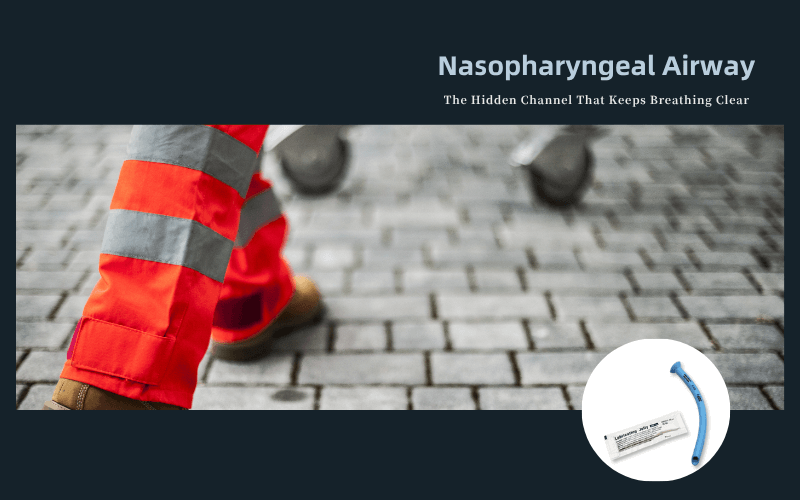TEl: +86-13148388090
Fax:+86-571-88616515
Nasopharyngeal Airway-The Hidden Channel That Keeps Breathing Clear
Author: admin / 2025-11-07In clinical anesthesia and emergency care, maintaining a patent airway is one of the most fundamental and lifesaving tasks. When oral access is limited, intubation is difficult, or the patient presents with trismus (jaw clenching), the nasopharyngeal airway (Nasal Trumpet ) can serve as an effective temporary measure. Simple in appearance yet powerful in function, it helps maintain airflow and prevents airway obstruction in patients who are semi-conscious but retain protective reflexes.

1. What Is a Nasopharyngeal Airway?
A nasopharyngeal airway is a soft, flexible tube inserted through the nostril into the nasopharynx, creating a passage for air to reach the lower airway. Its main function is to prevent obstruction caused by the tongue or soft tissue collapse, which can occur in patients with reduced consciousness. NPAs are appropriate for patients who require airway support but cannot tolerate an oropharyngeal airway, such as those with partial consciousness or limited mouth opening.
2. Materials and Design
Modern NPAs are typically made from medical-grade PVC or TPE, providing a balance of flexibility and firmness suitable for safe insertion. Many feature rounded, atraumatic tips and smooth internal walls to reduce friction and mucosal trauma. Some designs come pre-lubricated with water-soluble gel, simplifying insertion in emergency situations.
Size selection is crucial: the correct length is generally measured from the tip of the nose to the earlobe or angle of the jaw, and the diameter should allow comfortable placement without causing nasal trauma.
3. Clinical Applications
Nasopharyngeal airways are widely used in various settings:
- Emergency medicine and prehospital care: to maintain airway patency when intubation is delayed or difficult.
- Anesthesia and surgery: to prevent airway obstruction during sedation or minor procedures.
- Critical care transport: providing a temporary airway during movement.
- Patients with trismus or oral injuries: when oral airway devices cannot be safely inserted.
Insertion should follow the nasal floor parallel to the palate, with adequate lubrication, and care should be taken in patients with suspected basal skull fractures or severe facial trauma.
4. Advantages
NPAs offer several practical benefits in clinical care:
- Maintains spontaneous breathing and airway patency.
- Reduces risk of airway obstruction from tongue or soft tissue collapse.
- Compatible with oxygen delivery and suctioning in emergency settings.
- Relatively easy and rapid to use, even outside the hospital.
- Minimal trauma when properly inserted, making them suitable for repeated or short-term use.
5. Safety Considerations
While generally safe, NPAs must be used with caution in:
- Patients with suspected basal skull fractures or severe nasal/facial trauma.
- Cases where improper sizing could cause gagging, laryngospasm, or inadequate airway support.
- Situations requiring strict infection control — single-use or sterilized devices are recommended.
- Proper monitoring during use is essential to detect any complications such as nasal bleeding, displacement, or obstruction.
6. Conclusion
The nasopharyngeal airway remains a simple yet indispensable tool for maintaining a patent airway in semi-conscious or difficult-to-manage patients. Its design and ease of use make it a cornerstone of emergency airway management, prehospital care, and procedural sedation. Modern products combine ergonomic design, soft atraumatic tips, color-coded sizing, and pre-lubrication options to improve both patient safety and procedural efficiency.


